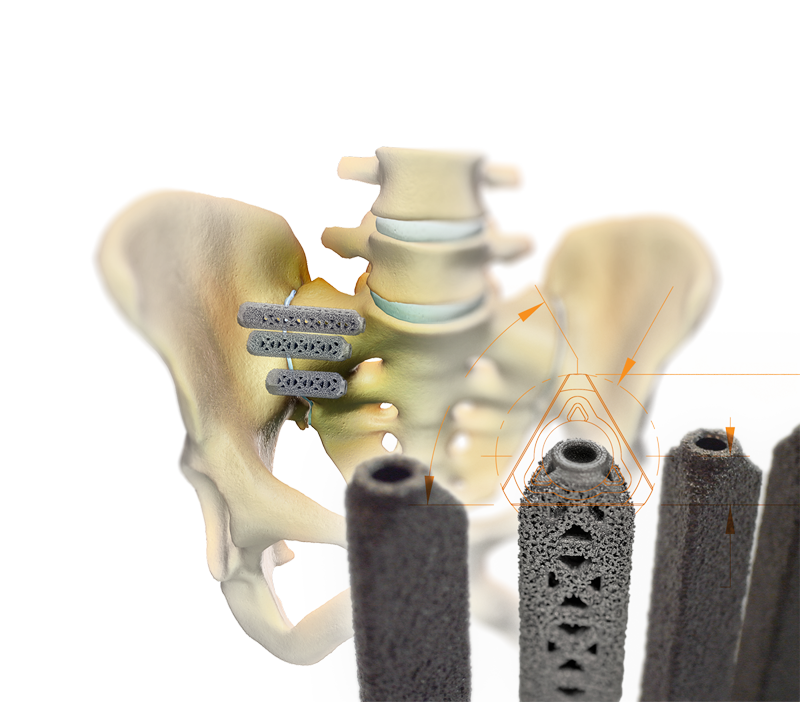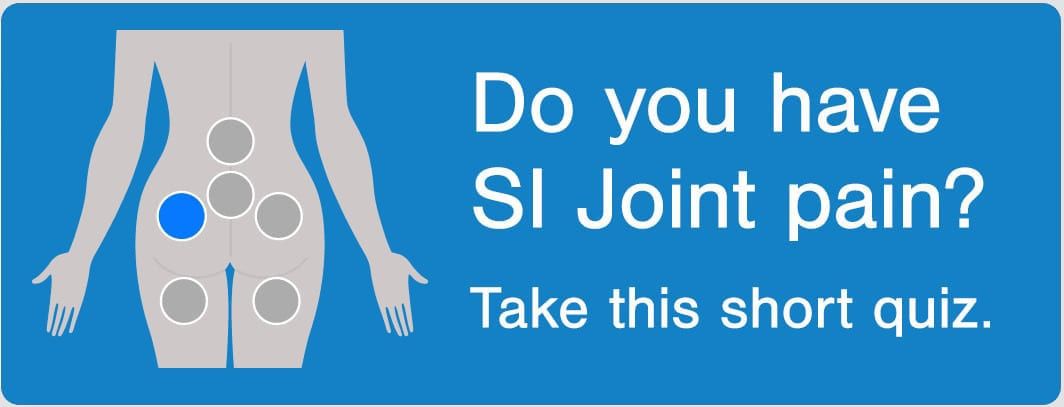Sacroiliac Joint (SI Joint) Anatomy
The sacroiliac joint (SI joint) is located in the pelvis; it links the iliac bones (pelvis) to the sacrum (lowest part of the spine above the tailbone). It is an essential component for shock absorption to prevent impact forces from reaching the spine.
Do you have SI Joint Problems?
The SI joint is a significant cause of lower back pain.Clinical publications have identified the SI joint as a pain generator in 15-30% of chronic lower back pain patients.1-4 In addition, the SI joint is a pain generator in up to 43% of patients with continued or new onset lower back pain after a lumbar fusion.5
Like any other joint in the body, the SI joint can be injured and/or become degenerative. When this happens, people can feel pain in their buttock and sometimes in the lower back and legs. This is especially true while lifting, running, walking or even sleeping on the involved side.
According to scientific data, it’s common for pain from the SI joint to feel like disc or lower back pain. For this reason, SI joint disorders should always be considered in lower back pain diagnosis.

Making a Diagnosis
A variety of tests performed during physical examination may help reveal the SI joint as the cause of your symptoms. Sometimes, X-rays, CT-scan or MRI may be helpful in the diagnosis of SI joint-related problems.
The most relied upon method to accurately determine whether the SI joint is the cause of your lower back pain symptoms is to inject the SI joint with a local anesthetic. The injection will be delivered under either X-ray or CT guidance to verify accurate placement of the needle in the SI joint. If your symptoms are decreased by at least 50%, it can be concluded that the SI joint is either the source of or a major contributor to your lower back pain. If the level of pain does not change after SI joint injection, it is less likely that the SI joint is the cause of your lower back pain.
Treatment Options
Once the SI joint is confirmed as the cause of your symptoms, treatment can begin. Some patients respond to physical therapy, use of oral medications, or injection therapy. These treatments are often performed repetitively, and frequently symptom improvement using these therapies is temporary. At this point, you and your surgeon may consider other options, including minimally invasive surgery.
Do you experience one or more of the symptoms listed below?
- Lower back pain
- Sensation of low extremity: pain, numbness, tingling, weakness
- Pelvis/buttock pain
- Hip/groin pain
- Feeling of leg instability (buckling, giving way)
- Disturbed sleep patterns due to pain
- Disturbed sitting patterns (unable to sit for long periods, sitting on one side)
- Pain going from sitting to standing.
SI Joint Fusion with the iFuse Implant System®
The iFuse Implant System is designed to provide stabilization and fusion for certain SI joint disorders. This is accomplished by inserting triangular- shaped titanium implants across the sacroiliac joint to maximize post- surgical stability and weight bearing capacity. The procedure is done through a small incision and takes about an hour. SI joint treatment using the patented triangular design of the iFuse Implant™ has produced unparalleled clinical results. More than thirty published, peer-reviewed articles demonstrate safety and effectiveness of the iFuse Implant System.6 iFuse is the only SI joint fusion system with clinical studies demonstrating that treatment improved pain, patient function, and quality of life.7



References:
- Bernard TN, et al. Recognizing specific characteristics of nonspecific low back pain. Clin Orthop Relat Res. 1987;217:266–80.
- Schwarzer AC, et al. The Sacroiliac Joint in Chronic Low Back Pain. Spine. 1995;20:31–7.
- Maigne JY, et al. Results of Sacroiliac Joint Double Block and Value of Sacroiliac Pain Provocation Tests in 54 Patients with Low Back Pain. Spine.
- 1996;21:1889–92.
- Sembrano JN, et al. How Often is Low Back Pain Not Coming From The Back? Spine. 2 009;34:E27–32.
- DePalma MJ, et al. Etiology of Chronic Low Back Pain Patients Having Undergone Lumbar Fusion. Pain Med. 2011;12:732-9.
- Polly, D.W. et al., Neurosurgery. 2015. A list of additional published studies is available at www.si-bone.com/results – Dr. Polly is an investigator on a clinical research study sponsored by SI-BONE. He has no financial interest in SI-BONE. Research was funded by SI-BONE, Inc.
- Duhon, B . et al., Triangular Titanium Implants for Minimally Invasive Sacroiliac Joint Fusion: 2-Year Follow-Up from a Prospective Multicenter Trial.
- Int J Spine Surg. 2016;10:Article 13. – Dr. Duhon is a paid consultant of and conducts clinical research for SI-BONE Inc. Research was funded by SI-BONE, Inc.
SI-BONE requests inclusion of the following indication and risk statement
The iFuse Implant System® is intended for sacroiliac fusion for conditions including sacroiliac joint dysfunction that is a direct result of sacroiliac joint disruption and degenerative sacroiliitis. This includes conditions whose symptoms began during pregnancy or in the peripartum period and have persisted postpartum for more than 6 months. Clinical studies have demonstrated that treatment with the iFuse Implant System improved pain, patient function, and quality of life. There are potential risks associated with the iFuse Implant System. It may not be appropriate for all patients and all patients may not benefit. For information about the risks, visit www.si-bone.com/risks



